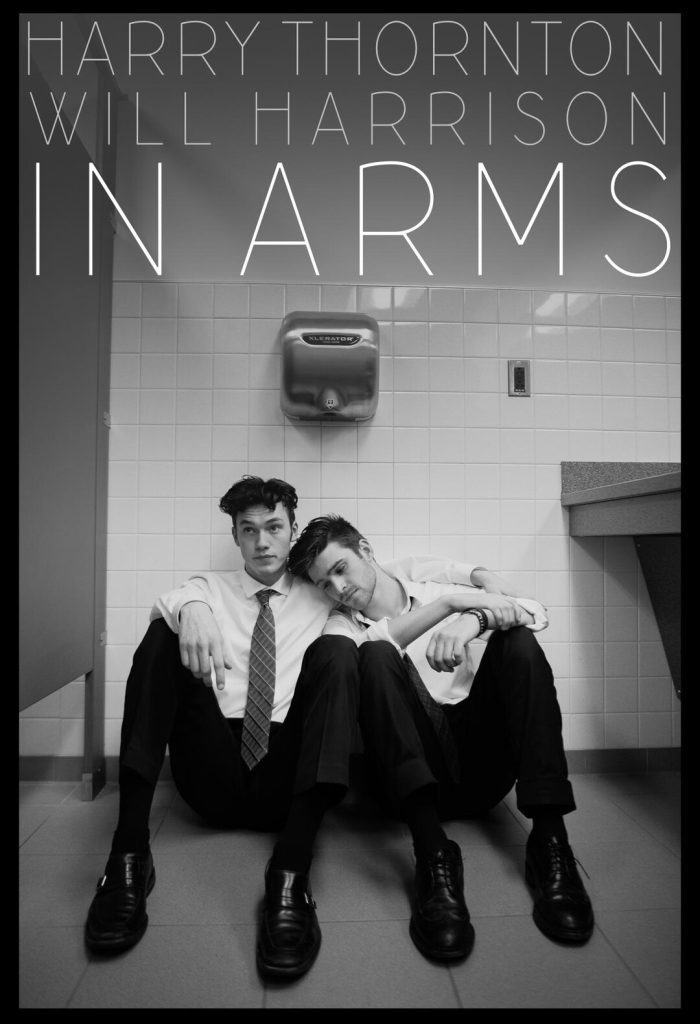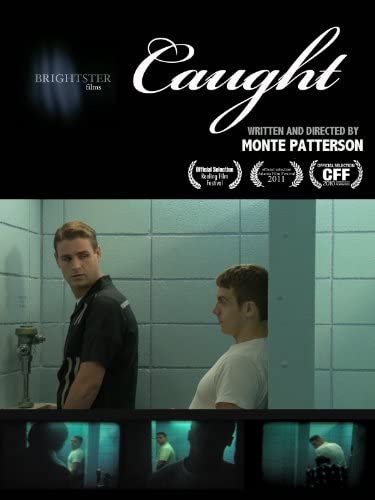My introduction to the public restroom would have been in kindergarten, 1960–61. There were issues.
The first incident involved a pair of undies found in the Boys. Discreetly our teacher or an admin asked each boy to allow them to draw down our waistbands to confirm we were not nude ’neath our britches. Since time was of the essence, I don’t recall any parental informed consent. I’m sure the culprit was caught, maybe expelled.
It was later, in first grade, that the Boys became bogeyman. Our teacher Mrs. Stogsdill told us not to ask to use the restroom unless we “really” had to go. Surely I could hold it until recess. It wasn’t “really” that bad. A fellow student noticed the amber pool beneath my cuff. If I’m not mistaken I was given a note penned in Stogsdill’s cursive to be delivered to my parents. (It wasn’t.) I think they may have been informed at a parent-teacher conference. When exactly I might be exposed as a desk-wetter to my parents clouded that school year. Until a third incident, about which below. Either I got all my childhood diseases during the fourth quarter that year or I didn’t like school (I didn’t): I was absent eleven days.
I wasn’t traumatized by the Boys itself, although I hated open toilet stalls when I “really” had to go No. 2. With No. 1 we were lucky: the urinal. In junior high our shop teacher mentioned he’d heard about urinals for the Girls. Obviously that still was in the day of segregated non-electives: Industrial Arts for us and Home Economics for them. That would change in senior high, and not without a bit of a kerfuffle, I think.
I mention all this because last week YouTube’s algorithm decided I needed to re-view restroom-oriented content, and I learned that public toilet shorts are some of my favorites.
Bathroom Humor
First, the cartoons.
Water Closet Confessional
The Men’s Room, directed by Jane Pickett, begins as you might expect: a gaggle of guys loitering a loo. YouTube pushed it my way many a time and I resisted because its prologue’s so predictable. And so, it’s somewhat subversive. Our protagonist, perhaps younger than the rest and sporting red socks, saunters into a park. His pocket’s packed with a well-worn copy of Who Goes There? by one Wayne Canopy.1 He pulls a smoke from behind his ear, nonchalant but negligent; he’s placed the open end twixt his lips. Display as he might no one will light, although a suitor afar flaunts a flame. Withdrawing to sanctuary, the two begin an exchange, the glory hole their unlatticed screen.
Arrangement can be seen as a bridge to Caught, below, conveying verbally, like The Men’s Room. South African director Chadlee Skrikker self identifies (in a defunct profile) as Cape Coloured, a term I thought had gone the way of button shoes and bantustans. He’s involved with the Cape Town filmmaking collective, Kinoburo, as in a Soviet-esque cinema-bureau. Clever, I thought, but find that two decades ago filmmakers in Montréal founded Kino, a short-film collective with “cells” around the world.
Caught Cottaging
Caught, directed by Monte Patterson, no longer is streaming on YouTube. It’s a prosaic period piece about an Ohio family man with a yen for the membrum virile in what once was quaintly called a tearoom (less quaintly, a public toilet). Because you can watch it for $1.99 on Amazon, I won’t synopsize with spoilers.
Spoiler Alert: The poster for Caught displays frames from a hidden camera manned behind the restroom’s two-way mirror. No need for messy entrapment when you’ve filmed an encounter. The film is based on an actual 1962 sexplosion in Mansfield, Ohio that involved the molestation and murder of two girls, ages 7 and 9, by an 18-year-old boy. The logic of law enforcement being a force unto itself, they pursued the pansies, prosecuting at least a dozen.2 One case, a petition called Chamberlain, came before the U.S. Supreme Court. “In refusing to hear Chamberlain, the court took its first tentative step toward its 1986 Bowers v. Hardwick ruling upholding the constitutionality of sodomy laws,” write authors Joyce Murdoch and Deb Price in their study of gay sex and the Supreme Court.3
Surveillance of public toilets was an issue taken on exactly a decade before by the early Mattachine, the first gay civil rights organization that had legs. I write about it in my article with the subtitle The Gay-Latinx Coalition That Wasn’t. From the introduction:
The organization had begun its engagement with the larger community by standing in solidarity with Mexican Americans who, like homosexuals, were targets of the Los Angeles Police Department.
Those Mexican Americans were targeted in an Echo Park Boathouse public toilet that was being surveilled by the vice squad—through the ceiling—not unlike the Mansfield PD’s two-way mirror.
Guys in Ties
These two films depict the conundrum of decorum at gatherings: a wake and a Scottish hoedown, or cèilidh.

In Arms (pulled from YouTube) director Lukas Cox is a Los Angeles-based photographer and filmmaker, according to his (defunct) bio. He’s also a meticulous musician in the mold of Duncan Sheik.
Director Louis Norris not only has filmmaking experience, but spent time in the last decade distributing supplies at the Calais Jungle refugee camp. From his FilmFreeway bio:
In September I was in Kharkiv, Ukraine, shooting a documentary dance film exploring the legacy of Soviet architecture in the city. This project was the culmination of choreographer Jonathan Ben-Shaul’s artistic residency with Kharkivska Residencia Slovo.
Penile Code Violation
In April of 1998 singer-songwriter George Michael was arrested in Beverly Hills for engaging in a lewd act in the public restroom at Will Rogers Memorial Park. It likely was a case of entrapment and Michael pleaded no contest, receiving a light fine and a penalty of eighty hours of community service.4 Michael lost no time in morphing scandal into single, penning “Outside” and shooting an accompanying promo video, directed by Vaughan Arnell.
I’m a slight fan of Michael’s work. I own some Wham! vinyl as well as a 12″ of “Careless Whisper” (the promo video of which presents Michael as an ironic poseur). I was touched by his opposition to the so-called War on Terror, which will receive its own, absurd monument on the Mall. I was amused to find that Micheal’s arresting officer, who’d essentially outed the artist, claimed he’d been mocked and slandered by the “Outside” video. We now have a term for that sort of thing: snowflake. The vice cop hit Michael with a $10 million lawsuit, which eventually was thrown out.5
I’m reminded about another, more recent case, which I mention in my article that was the first to identify the vice cops in an important lewd conduct case from seventy years ago.
On October 15, 2014 in Long Beach, California, Rory Moroney was arrested for lewd conduct in a public park restroom. “Detective Raymond Arcala, an undercover decoy in the vice unit, said Moroney was masturbating in one of the park restrooms,” as reported in the Long Beach Press-Telegram. “Moroney, however, said Arcala’s eye contact and posturing indicated he wanted to have sex and wasn’t offended by the advances.” Long Beach Superior Court Judge Halim Dhanidina dismissed the case on April 29, 2016, granting a defense motion that enforcement had been discriminatory since LBPD’s vice unit employed only male decoys who targeted gay men.6
The horror of lewd conduct prosecution in the twentieth century is perhaps best epitomized by a masterful short I included in a blog post titled, of all things, as Careless Whisper.
Golgotha, Gomorrah
I scratched Two Little Boys from my loo list a couple of times because it’s so harrowing. But it’s what sex and gender disturbers face in many lands, including director Farbod Khoshtinat’s native Iran, and our own. It’s what little boys and little girls face, confronted by a world, run by adults who have been traumatized by that same world, run by adults.
Now I’m reminded of what my friend Milania told me after attending a screenwriting class years ago. The instructor had praised a fellow student’s script for its inclusion of a novel method of murder. Milania expressed her outrage at the instructor’s insensitivity. In light of Milania’s sentiment, and in this Lenten season, I ask whether Josh’s death is sacrifice or spite. For years I’ve been troubled by screenplay deaths that neatly knot their narratives’ bows, a case in point being the film that is sure to be lauded with Oscars next Sunday (although as Rob Berg pointed out to me recently, Jane Campion had no power over the plot of the original novel). If directors and producers steered clear of a portion of such material, might writers develop novel narratives?
Prologue and postscript to Khoshtinat’s film is a swing-set kiss. Mine took place in the classroom, pecking a girlfriend just as the teacher walked in. I was six. I was made to feel I’d committed a capital offense. I forged my mother’s signature on the note I was to deliver. When I returned it, Mrs. Stogsdill nearly laughed at my craft. So it was a game, after all. I didn’t have to bully. I didn’t have to end my life.
Header image: Public toilet,
Yoyogi Fukamachi Small Park,
Tokyo, Shigeru Ban Architects
Notes
- I asked Pickett about the book but didn’t receive a reply. Its title is curious because it’s the same as a John W. Campbell Jr. novella, adapted to film by John Carpenter as The Thing, which involves shapeshifting, something LGBT+ people know a little about.
- Less than a week after I published this post, a member of the U.S. House of Representatives unwittingly resurrected Gay Male = Girl Molester in an attack on trans* bathroom use. And the Orbán-DeSantis-pedophile connection.
- Joyce Murdoch and Deb Price, Courting Justice: Gay Men and Lesbians v. the Supreme Court (New York: Basic Books, 2001, 135–138). For a copy-and-paste pastiche of the Mansfield madness see “Wide Stance Tearoom Bust 1962” by blogger Jarrel Harris, 14 Feb 2008. The “wide stance” refers to the public toilet defense by Sen. Larry Craig who was arrested at the MSP airport for lewd conduct, which just happens to be the subject of this Slate V reenactment.
- “Lewd Act Cost[s] George Michael $810,” Pittsburgh Post-Gazette, 15 May 1998, 15.
- See the Legal troubles section of Michael’s Wikipedia profile for documentation.
- “Judge says Long Beach police discriminate against gay men in lewd conduct cases,” Long Beach Press-Telegram, 29 Apr 2016, accessed 29 May 2016. I am grateful to my wife Andrea Carney for this.


